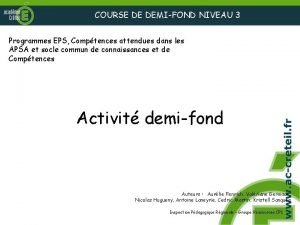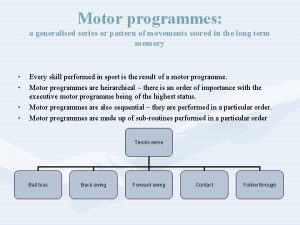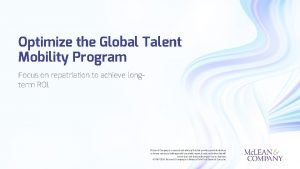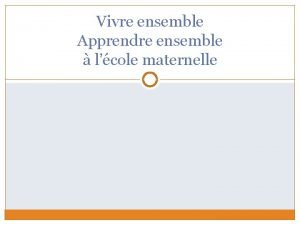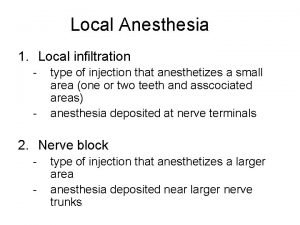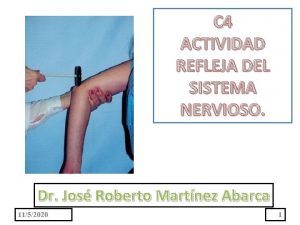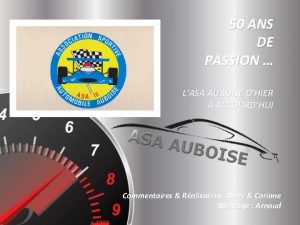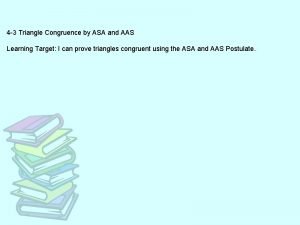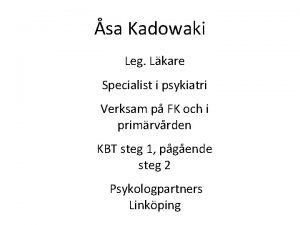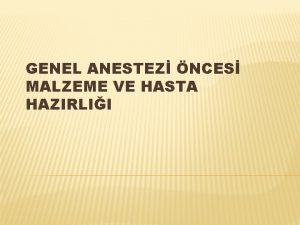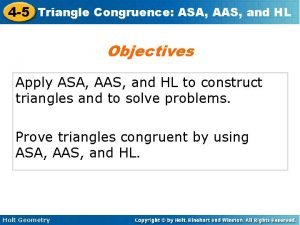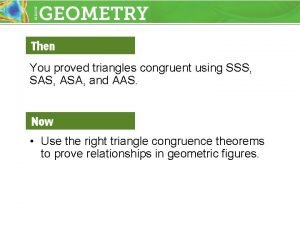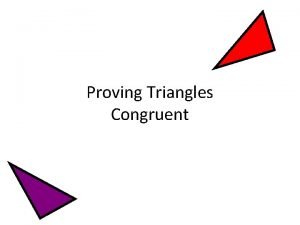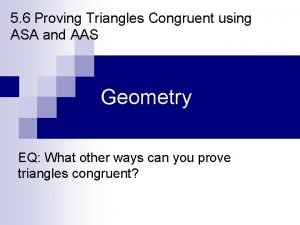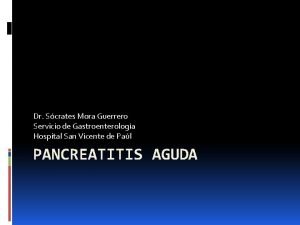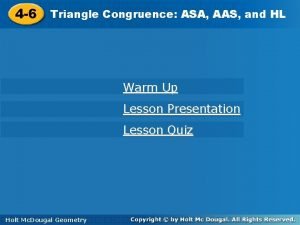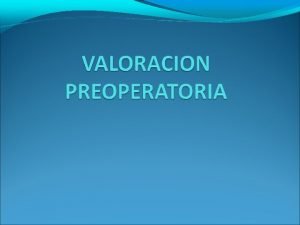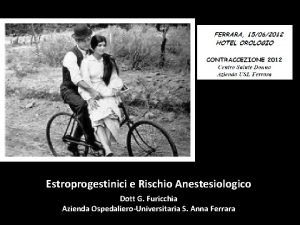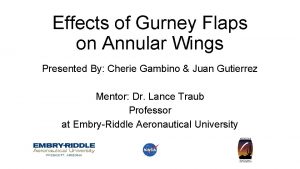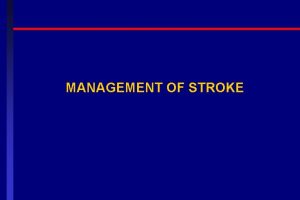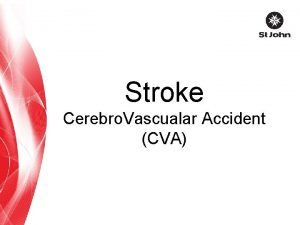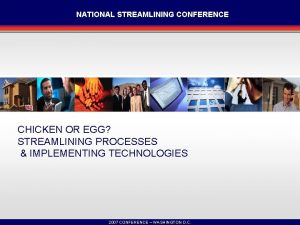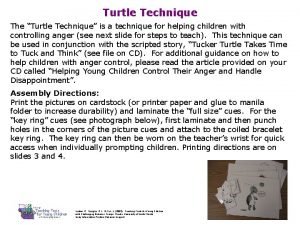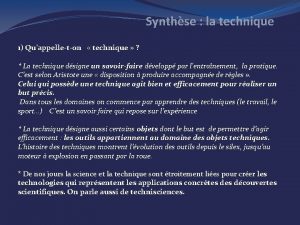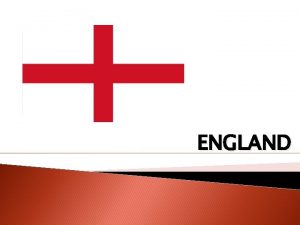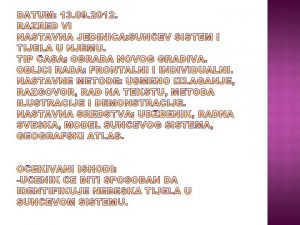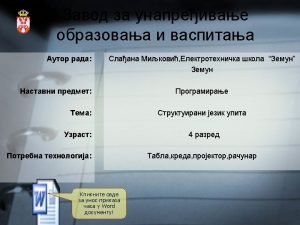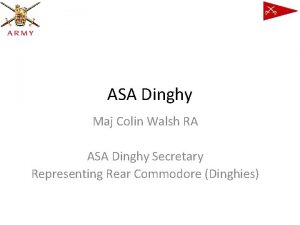Effective Stroke Technique ASA England Programmes Streamlining F




























































- Slides: 60

Effective Stroke Technique ASA England Programmes

Streamlining F. P. Furniss

Streamlining(Points to Get Over to the Group) • Poor skills in starting/turning/transfer to stroke will put you at a disadvantage to other swimmers in the race who have superior skills. • The older you become improvements become minimal, superior streamlining skills and transfer to stroke ability off starts and turns, should be addressed early in the training programme. Underwater transfer to stroke capabilities need to be of the highest standard. F. P. Furniss

Streamlining Points (To Get Over To the Group) • Most Olympic Champions swim with less strokes than their competitors • Most are more streamlined within the actual swimming stroke for longer • Great 200 metre Breaststroke swimmers have their arms in a streamlined position almost half the entire race • Many are better both around the wall and off the wall • Streamlining is very important to both technique and transition skills. F. P. Furniss

What is Streamline ? • A shape that presents very little resistance to a flow of water, giving increased speed and ease of movement through the water. • • A line along which the flow of a moving fluid is least turbulent. • Less Drag gives increased speed • Effective streamlining with dolphin kick is faster and more energy efficient than swimming on top of the water. F. P. Furniss

Perfect Streamline Teach streamline focus on tension through the Red Dots/Joints • • • Ankles - Knees – hips. Shoulders - Neck Elbows - Wrist Apply strength in these areas Maintain flexibility F. P. Furniss

Transition To Stroke F. P. Furniss

Transition To Stroke Push Off Technique • Coach/teach correct push offs • Sink and push Hands Meet before Push Off Feet on wall/whilst facing side • Body position, arm action important when sinking • Hips and shoulder alignment Hips Shoulders In Line • Arms ¾ streamline as push is made • Leave the wall on side • Rotate to prone ‘off the wall not ‘on the wall • Natural lift will occur from air in the lungs F. P. Furniss Streamline is reached before toes leave wall

Breakout – Transition from UW to Surface • Aim is to transfer underwater push and speed into swimming speed • Remain as horizontal as possible from UW to breaking surface of water • Low skilled/young age groupers search for big breath here following submersion • First pull down close to the surface so that momentum is picked up instantly • Starting pull to early will result in drag as body not in streamlined position • Keep head position neutral • Shoulders and head break the surface together on Fly/Back/Free F. P. Furniss

Breaststroke UW Breakout • More depth required an efficient breakout will be between 8 -12 mts long • The Breaststroke pull out rules allows 1 double arm pull through to the hips, 1 dolphin kick and 1 breaststroke kick before commencing the stroke. • The dolphin kick can be performed before/during or after the pull down • I prefer an early dolphin kick because it helps maintain push off speed, its easier to maintain streamlining this way, the pull down commences immediately following the down beat, legs must return to streamline as quickly as possible. F. P. Furniss

Perfect UW Breaststroke Breakout (Points) • Hands and forearms remain tight to chest and head through recovery • Heels recover to ‘catch’ at speed • Kick must be ready to strike as arms are at ¾ extension, otherwise excessive drag occurs • Arms and legs reach streamline position simultaneously. F. P. Furniss

Essentials In Technique • Body Position • Legs • Arms • Breathing • Timing • Remember Action/Reaction • Stroke Length/DPS • Stroke Rate • Acceleration • Rotation • Rhythm • Consistency of application • Flexibility and ROM • Overall efficiency F. P. Furniss

Key Technical Points 4 Strokes F. P. Furniss

Breaststroke F. P. Furniss

Key Technical Requirements • Starting point is feet and high degree of ankle flexibility • Very few World Class Breaststrokers are arm dominant • Acceleration through both pull and kick • Timing and streamlining is crucial • Speed is at extension • Breaststroke the most individual of all the strokes F. P. Furniss

Key teaching/coaching points – Body Position • Will lift in relation to in-sweep of arms and coming together of hands • Will drop as reach forward to full extension • Aim is not excessive undulation • Body at its most streamlined as arms reach full extension and feet are accelerating together • Technically gifted individuals will spend almost half the race in this position • Breathing-breath takes place during in-scull avoid lifting head too early to breath during the out-scull. F. P. Furniss

Speed At Extension F. P. Furniss

Key teaching/coaching points - Arms • Press outwards at ‘catch’ point • Firm hold on water • Accelerate through the pull and into the in-sweep • Maintain high elbows • Do not pause underneath your chest, extend forward preparing for next ‘catch’ and arm cycle. • Rapid forward movement of arms to extension, this is the fastest part of the stroke F. P. Furniss

F. P. Furniss

Key teaching/coaching points - Legs • Recover feet within bodyline think feet to hips rather than knees to chest • Take time to position feet to kick effectively • Set feet outwards – flex your ankles • Main force of propulsion from knees down • Kick backwards explosively • Kick completed when feet drive together • Finish kick with fast acceleration and ankle movement/squeeze gluts together at end of kick F. P. Furniss

F. P. Furniss

Key teaching/coaching points – Timing/Streamline • Timing of head drop between arms is crucial • Head/Shoulders and back are a unit • Controlled rise and fall through the stroke cycle • Minimise the ‘frontal resistance’ • Stay compact • Pull elbows in during the in-sweep • Drop your head through your elbows on the extension forwards. F. P. Furniss

F. P. Furniss

Common Faults - Arms • Palms together at full extension • Cannot ‘catch’ the water in this position, first movement would be to rotate the wrist so that they can press outwards • Will cause to slip water on first part of pull • Rotate the hands through the recovery of the arms. • Hands are now ready for action • Hands can press outwards immediately and start propulsion. F. P. Furniss

F. P. Furniss

Common Faults - Legs • Propulsive phase only accounts for 10 -20% of the kick cycle • This part of the kick will last for less than 0. 5 second so it has to be forceful and fast • Make the most from minimising resistance in the recovery phase • Prepare to maximise propulsion, rotate feet outwards, feet in the ‘set’ position • Explode backwards together, accelerate through final part of the kick. F. P. Furniss

Breaststroke Body Position/Timing F. P. Furniss

Breast Arm Action/Shoulder Lift F. P. Furniss

Breast Leg Action F. P. Furniss

Breaststroke - Key Technique Points • Not excessive undulation/inclination • Look for ability to extend as arms reach for full extension and feet accelerate together • Timing of head drop into stroke • Feel ‘catch’ slightly wider than shoulder width • Outward, slightly downward sweep of arms. • Accelerate hands/arms together/lift of shoulders • Propulsion on kick from knees down/acceleration of feet • Not excessive parting of upper legs • Breathing, takes place on in-scull, avoid early breathing on out-scull • Fastest phase of stroke at full extension F. P. Furniss

Butterfly F. P. Furniss

Key Technical Requirements • Combine power and balance within the stroke • Coach head to toe movement wave type action • Hip action essential for effective kick, propulsive finish to the wave. • Target minimum upper body movement, with 2 kicks to each arm cycle. • Relaxed recovery, landing of arms and head must be simultaneous. F. P. Furniss

Key teaching/coaching Points • Body Position - Undulation Keep to a minimum , its a wave like motion, with a fairly flat upper body. This is important to decrease fatigue build up. As the chest is pressed down into the water there is relatively little movement through head/chest. It then increases in strength as it travels through hips and legs finally to feet. • Position of head Avoid excessive movement of head. The aim is relaxation in the area of the neck During breathing the aim should be as little undulation as possible. • Breathing-to requirements of event F. P. Furniss

F. P. Furniss

Key teaching/coaching points - Arms • Enter on shoulder line • Head low at hand entry point • Limited head lift through breathing • Propulsive phase consist of outsweep, in-sweep and back-sweep , accelerate hands past thighs • Return head down as arms pass the line of shoulders, this will bring hips up to body into alignment • Low flinging recovery with elbows flexed hands low to water F. P. Furniss

Key teaching/coaching points - Legs • On down-beat, whip motion begins with flexion of the hips initiated by the core of the body • Accelerate through to feet • Drive feet back below line of the hips • Slight knee bend on down kick • In-toeing of feet F. P. Furniss

F. P. Furniss

Butterfly Body Position F. P. Furniss

Butterfly Arm Action/Breathing F. P. Furniss

Butterfly Leg Kick F. P. Furniss

Butterfly - Key Technique Points • • • Not excessive undulation (body wave) (skim across the water) Timing of head lift/drop through breathing Low flinging arm recovery with elbows slightly flexed On underwater arm phase accelerate downwards , outwards, backwards movement with acceleration to aid the recovery Hand entry point between shoulder line and middle of head. Kick from hips Slight bend of knee, in-toeing of feet 2 kicks to 1 arm cycle Kick 1 on entry, kick 2 on release Breathing pattern to suit event requirements F. P. Furniss

Frontcrawl F. P. Furniss

Key Technical Requirements Importance of Streamline Positions • Swim in two straight lines 1) Horizontal 2) Vertical • Reduction of any Lateral deviation 1) Importance of kick efficiency 2) Importance of stable head position 3) Importance of shoulder ROM • Hip and Shoulder Rotation 1) Hips 45 degrees each side 2) Shoulders more than hips Learn to develop use of both internal and external rotator muscles groups to produce power and relaxation at key stages of arm stroke F. P. Furniss

Frontcrawl Shoulder/Hip Rotation Slide Hand to ‘Catch’ Position F. P. Furniss

Frontcrawl Transfer From ‘Catch’ To High Elbow Position F. P. Furniss

Body Position/Rotation/Breathing F. P. Furniss

Relaxed High Elbow Recovery/Shoulder-Hip Rotation F. P. Furniss

Leg Action F. P. Furniss

Front crawl Key Technique Points • Rotation of body through longitudinal axis to facilitate DPS , catch and breathing. • When not breathing look about 1 metre in front • High relaxed elbow recovery. • DPS on hand entry with wrist above hand • High elbow pull approximately 100/110 degrees for maximum propulsion • Accelerate to push phase • Slow to fast hand speed from entry to release • Kick originates from hips • Some crossover of feet • Breathing/timing in relation to event F. P. Furniss

Backstroke F. P. Furniss

Key Technical Requirements • The nature of the stroke demands that balance , rhythm, relaxation and controlled rotation are key to good technique. • Timing of rotation is important to keep the stroke flowing and maintain balance • Build a strong core strength programme to maximise underwater skill off the wall • Important to hold SR throughout the race, this is a common fault particularly when swimming 200 BK • Have the ability to maximise underwater transition from the start and turns, accelerate into first stroke at the surface. • Rate of underwater kick is crucial to maintain momentum and speed off the wall • Both BK and Fly kick sets are vital part of training for this stroke. F. P. Furniss

Back Pull Shoulder/Hip Rotation F. P. Furniss

Back Pull Underwater Elbow High F. P. Furniss

Accelerate Through To Push Phase F. P. Furniss

F. P. Furniss

Back Kick Depth/Ankle Flexibility F. P. Furniss

Back – Body Position/Rotation F. P. Furniss

Back –Head Position/Shoulder-Hip Rotation F. P. Furniss

Back – Leg Action F. P. Furniss

Backstroke Key Technique Points • • • Slight incline in body position to accommodate head position. Fixed head position throughout stroke cycle. Rotation of body through hips and shoulders Relaxed little finger entry High elbow pull, accelerate through to push phase Hand finishes below body line. Thumb first recovery turning to little finger first entry Continuous kick from hips Slight in-toeing of feet Propulsion on up-kick F. P. Furniss
 Anterior stroke vs posterior stroke
Anterior stroke vs posterior stroke Raymond marcillac et son chien
Raymond marcillac et son chien Fictional programmes
Fictional programmes Xcap gestion des programmes et dnc
Xcap gestion des programmes et dnc Eps niveau 3
Eps niveau 3 Marcus scheuren
Marcus scheuren Programme ce soir la tlvision
Programme ce soir la tlvision Designing marketing program to build brand equity
Designing marketing program to build brand equity Motor programmes
Motor programmes Agriseta skills programmes
Agriseta skills programmes Talent mobility program
Talent mobility program Activité vivre ensemble maternelle
Activité vivre ensemble maternelle Agriseta skills programmes
Agriseta skills programmes Mental health policy, plans and programmes michelle funk
Mental health policy, plans and programmes michelle funk Ifric 13
Ifric 13 Prerequisite programs for haccp template
Prerequisite programs for haccp template All national programme list
All national programme list Pillars of jesus youth
Pillars of jesus youth Who guidelines on core components of ipc programmes
Who guidelines on core components of ipc programmes Public employment programmes
Public employment programmes Vertical health programmes
Vertical health programmes Asa classification chart
Asa classification chart Buccal infiltration
Buccal infiltration What makes a good king
What makes a good king Ejemplos de reflejos polisinapticos
Ejemplos de reflejos polisinapticos Jacky bruhammer
Jacky bruhammer Evaluacion preanestesica
Evaluacion preanestesica Quiste meniscal interno
Quiste meniscal interno Oral contrast npo guidelines
Oral contrast npo guidelines Kpi asa
Kpi asa Lesson 3 triangle congruence by asa and aas
Lesson 3 triangle congruence by asa and aas Area strategica di affari
Area strategica di affari Asa postulate example
Asa postulate example Siembra en medios liquidos
Siembra en medios liquidos Introduction to bookkeeping and accountancy exercise
Introduction to bookkeeping and accountancy exercise Asa guidelines for anesthesia in remote locations
Asa guidelines for anesthesia in remote locations O isuse domnul meu
O isuse domnul meu Cases of law of sines
Cases of law of sines Asa role and purpose
Asa role and purpose Asa airway
Asa airway Lkare
Lkare Hvad er vlan
Hvad er vlan Penulisan bebas dan penulisan kreatif
Penulisan bebas dan penulisan kreatif Riikka asa
Riikka asa Sas congruence theorem
Sas congruence theorem Anestez
Anestez Asa aas hl
Asa aas hl Swicb
Swicb Tuluyang kwentong nagsasalaysay ng mga tradisyong pilipino
Tuluyang kwentong nagsasalaysay ng mga tradisyong pilipino Asa marketing
Asa marketing Congruent triangles sss sas asa aas
Congruent triangles sss sas asa aas Ssa postulate
Ssa postulate How to prove triangles are congruent
How to prove triangles are congruent Balthazar pancreatitis
Balthazar pancreatitis Hl
Hl Riesgo asa
Riesgo asa Aaa asa sss
Aaa asa sss N mentalis anesthesia
N mentalis anesthesia Estroprogestinici
Estroprogestinici Asa 2
Asa 2 Annular wings
Annular wings




